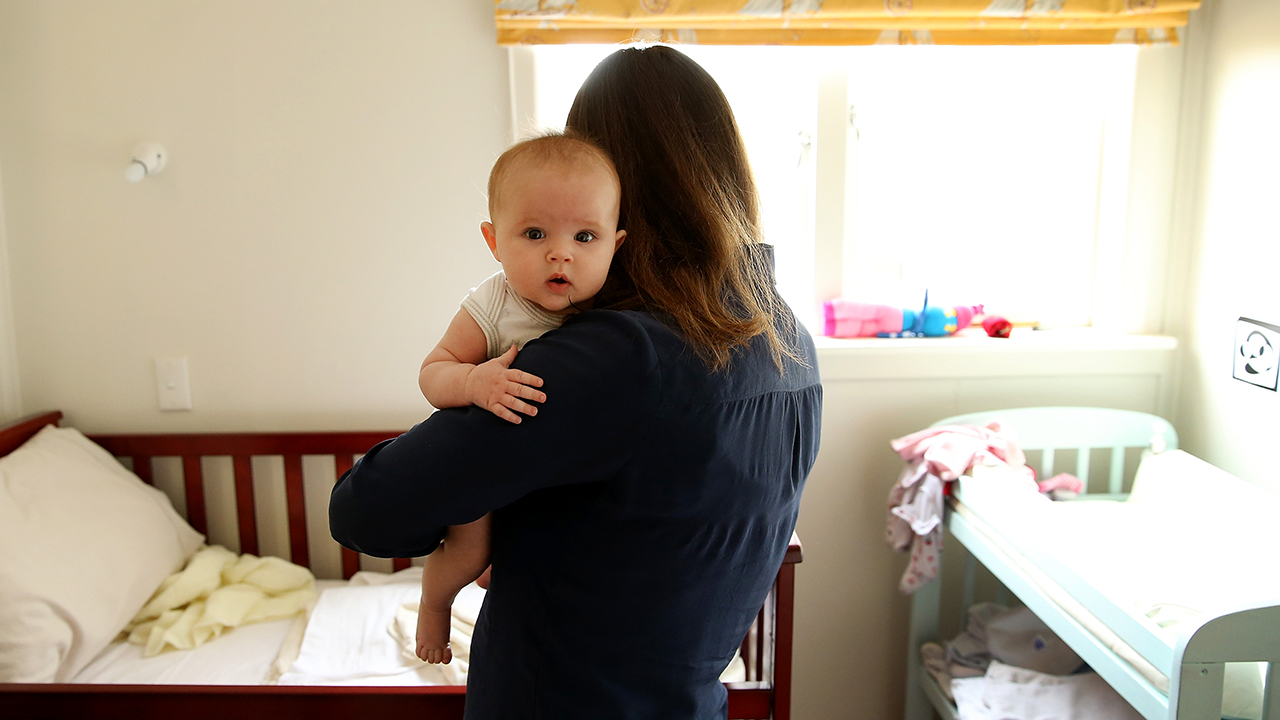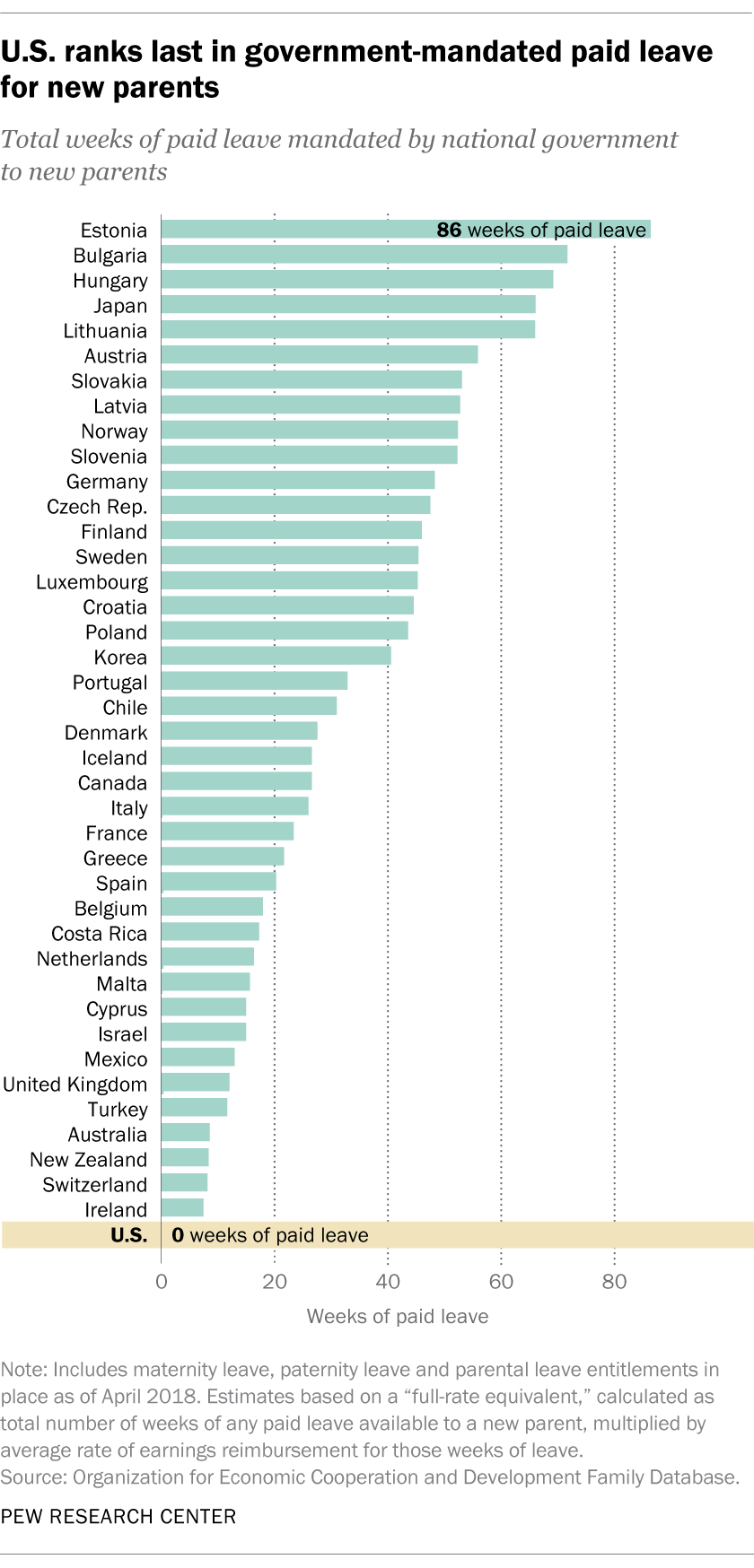
The share of moms who are working either full or part time in the United States has increased over the past half-century from 51% to 72%, and almost half of two-parent families now include two full-time working parents. At the same time, fathers – virtually all of whom are working – are taking on more child care responsibilities, as fatherhood has grown to encompass far more than just bringing home the bacon.

Despite these transformations, the U.S. is the only country among 41 nations that does not mandate any paid leave for new parents, according to data compiled by the Organization for Economic Cooperation and Development (OECD) and current as of April 2018. The smallest amount of paid leave required in any of the other 40 nations is about two months.
In comparison, Estonia offers more than a year and a half of paid leave to new parents – by far the highest benefit provided by any of the countries represented. A number of countries – Bulgaria, Hungary, Japan, Lithuania, Austria, Slovakia, Latvia, Norway and Slovenia – offer over a year’s worth of paid leave as well.
The OECD statistics classify the total amount of leave available to new parents into three categories: 1) maternity leave, available to mothers around the time of a birth or adoption; 2) paternity leave, available to fathers around the time of a birth or adoption; and 3) parental leave, which is typically available after maternity or paternity leave. In some cases, parental leave is specifically allocated for mothers only or for fathers only. In other cases, it is available to either parent.
In 20 of 41 countries, the majority of all paid leave available is allocated for maternity leave. In fact, in six countries – Canada, Israel, Slovakia, Switzerland, Costa Rica and New Zealand – maternity leave accounts for all available paid leave related to the birth or care of a child. No leave is available for new fathers.
While paid leave is dominated by leave for mothers, leave earmarked specifically for fathers is now available in 34 of the 41 countries represented in the data. In most cases, the amount of paid leave specifically for fathers is relatively modest – about two weeks or less. However, there are a handful of exceptions. In Japan, almost half of all the available paid leave for new parents – 30 weeks – is earmarked for new fathers. And in Korea, men are allotted the equivalent of about 15 weeks of paid leave. Portugal, Norway, Luxembourg, Sweden and Iceland are also relatively generous in this regard, offering about two months of leave or more to new dads.
These estimates are based upon a “full-rate equivalent.” This measure is calculated by the OECD as the total number of weeks of any paid leave available to a new parent, multiplied by the average rate of earnings reimbursement for those weeks of leave. (While many countries reimburse 100% of average earnings or slightly less, particularly for maternity leave, less than 30% of average earnings is reimbursed in other paid leave situations.)
It’s important to note that while the U.S. is the only country that does not have a national paid leave mandate, California, New Jersey, New York, Rhode Island and the District of Columbia all have state-mandated paid leave plans in place. The state of Washington passed a state-mandated paid leave program in 2017; it will take effect at the start of 2020.
At the federal level, the U.S. House of Representatives recently passed a bill that would provide federal workers – both women and men – with 12 weeks of paid leave to care for a newborn or adopted child. The Senate is expected to vote on the measure this week, and President Donald Trump has indicated his support for the plan.
Note: This is an updated version of a post originally published on Dec. 12, 2013.